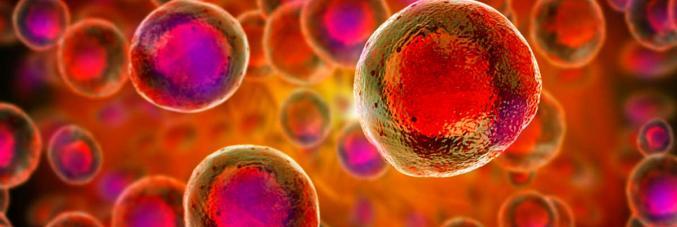
Human cells and non-membranous organelles against cancer and ALS
19.02.2021
The research team of Prof. Monika Fuxreiter from the Department of Biomedical Sciences of the University of Padua recently defined an algorithm that could play a fundamental role in the development of therapies for the treatment and cure of some oncological and neurological diseases, such as Amyotrophic Lateral Sclerosis (ALS), also known as Lou Gehrig's disease.
The research paper entitled "Widespread occurrence of the droplet state of proteins in the human proteome" was published in the scientific journal Proceedings of the National Academy of Sciences of the United States of America (PNAS) featuring the collaboration of the University of Cambridge Centre for Misfolding in the United Kingdom. Authors of the paper include Maarten Hardenberg, Attila Horvath, Viktor Ambrus, Monika Fuxreiter, and Michele Vendruscolo.
Organelles that populate the cell, where the fundamental cell process occurs, are organised as a subcellular structure that is easily recognizable from others by its membrane. This membrane defines the structure of the organelle, protecting it and allowing it to control the interactions with the cell.
Organelles without membranes or ‘membraneless’ organelles have recently been identified to perform important biological functions, related to processing DNA material or managing to cellular stress conditions, such as those which lack nutrients or are attacked by pathogens. From within the cell, these membraneless cellular organelles do not look like defined units, but rather as small-suspended liquid droplets. Conceivable reasons for the lack of a membrane vary, including that their functions involve a much more dynamic exchange with the cellular environment, or that they need to be assembled and disassembled quickly.
However, until now, there was little information on why proteins shape these ‘liquid droplet’ organelles, nor how many of the human proteins are involved in such a phenomenon. The innovative research conducted by the team at the University of Padua has shown that most human proteins can form these ‘liquid droplet’ and that 40% of them can give rise to separate membraneless organelles inside the cell. Since the proteins that form these droplets cause many neurological disorders, such as Amyotrophic Lateral Sclerosis (ALS), as well as a variety of cancers, then a prediction of their behaviour would help identify potential drug target sites.
This information certainly allows us to understand how the internal organization of the cell is much more complex than previously thought. The phenomenon of membraneless organelles is much more widespread than previously thought and the appearance of the cell changes rapidly as conditions change, respond more effectively to stressful situations. The researchers also developed an algorithm that can identify the regions of protein sequences involved in these processes, thus opening up interesting new perspectives of pharmacological research both for the treatment of pathologies involving these organelles in human cells and for the elaboration of new methods for the administration of drugs.



